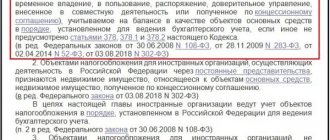Home / Real estate / Land / Taxes
Back
Published: 04/01/2017
Reading time: 11 min
0
580
As you know, the Constitution of the Russian Federation obliges all citizens of our country to pay taxes and fees established by law. This also applies to land owners. For them, tax law provides for the payment of a special tax at the local level, called land tax. However, depending on the specific type of land, the conditions for paying taxes on them also differ.
Therefore, this article will focus on paying taxes on land plots related to agricultural lands.
- Legislation
- Who should pay the tax?
- Tax rates on agricultural land
- Payment deadline
- Payment procedure
- Tax benefits
Legislation
The following Russian laws regulate the issue under consideration:
- Tax Code of the Russian Federation. It consists of two parts, namely, Chapter 31 of the second part of the Tax Code of the Russian Federation is devoted to land tax (who is the taxpayer, what relates to the objects of taxation, what tax base is applied, what benefits for paying land tax are provided, etc.).
- Special Federal Law No. 101-FZ of July 24, 2002, called “On the turnover of agricultural land.” It is dedicated specifically to agricultural land, what it includes, what actions can be carried out with such land plots and what restrictions there are. In addition to those that fall within the competence of the Land Code of the Russian Federation.
- Land Code of the Russian Federation. It regulates the circulation of agricultural land plots, but only those intended for gardens, vegetable gardens, dachas, garage construction and the placement of real estate on them.
Following the official definition, agricultural land refers to areas located outside populated areas and allocated specifically for agriculture. This could be farming or subsidiary farming.
And if we are talking about cooperative land, then on such plots you can plant gardens, vegetable gardens and build summer cottages.
What benefits are provided?
The law provides benefits and tax deductions for certain taxpayers.
Back to contents
Payment benefits
The fifth paragraph of Article 391 of the Tax Code of the Russian Federation states that a tax benefit in the amount of 10,000 rubles is received by the following citizens:
- Heroes of the Soviet Union, Heroes of the Russian Federation, full holders of the Order of Glory;
- disabled people of disability group I and disability group II;
- disabled since childhood;
- veterans and disabled people of the Great Patriotic War and other military operations;
- individuals who, as part of special risk units, took direct part in testing nuclear and thermonuclear weapons, eliminating accidents at nuclear installations at weapons and military facilities;
- individuals who were exposed to radiation as a result of the Chernobyl disaster and the liquidation of its consequences, as a result of the accident at the Mayak production facility and the discharge of radioactive waste into the Techa River, as a result of nuclear tests at the Semipalatinsk test site;
individuals who received or suffered radiation sickness or became disabled as a result of interaction with any types of nuclear installations.
Back to contents
Exemption from payment
Article 395 of the Tax Code contains a list of nine active clauses, according to which the following are exempt from land tax (of course, subject to the intended use of land):
- religious organizations;
- organizations and institutions of the penal system of the Ministry of Justice of the Russian Federation;
- organizations that own lands through which state highways pass;
- public organizations of disabled people (provided that disabled people make up at least 80% of the organization);
- organization of folk arts and crafts;
- shipbuilding organizations that have resident status in an industrial and production special economic zone;
- resident organizations of a special economic zone (within five years after the emergence of ownership of the site) and a free economic zone (within three years after the emergence of ownership of the site);
- organizations falling under the Federal Law “On Innovation”;
- individuals - representatives of small peoples of Siberia, the North and the Far East of the Russian Federation. Communities of such peoples.
Back to contents
How to reduce your deductions
This can be done only by reducing the cadastral value of the land. This can be done not only by the owner of the site, but also by the land user, tenant and even subtenant.
To change the cadastral value, you need to contact the arbitration court and provide there a package of documents from an application for revision of the cadastral value to conclusions and reports on the value of the taxable property and real estate (if there is one on the land).
The second way to reduce the cost is to contact the dispute resolution commission about the results of determining the cadastral value (within six months after the cadastral valuation).
Back to contents
Which areas are not subject to taxation?
Land tax is established on specific land plots of legal entities and individuals.
There are a number of lands that are not taxed, for example:
- occupied by cultural and archaeological heritage sites, nature reserves;
- provided for the needs of defense and security of the state, as well as for customs services;
- provided to forest and water funds;
- withdrawn from circulation.
Back to contents
Who should pay the tax?
The above laws regulate several groups of tax payers for plots of land:
- Russian citizens (owning land by right of ownership, lifelong possession or permanent use);
- Foreigners;
- Stateless persons;
- Legal entities.
Tax rates on agricultural land
This indicator as a whole, applied to a land plot, depends on its purpose and the way in which it is used.
It is worth immediately noting that the land tax did not undergo any changes in 2020. The conditions under which taxpayers can legally count on a rate reduction have also remained unchanged. This reduced rate applies if two conditions are present simultaneously:
- the plot of land must belong to lands within agricultural use zones in populated areas or to agricultural lands;
- the land plot should be used for agricultural production.
Tax rates are set by local authorities. At the same time, they cannot make them higher than those recorded in the Tax Code of the Russian Federation. And the Tax Code for agricultural land establishes a tax rate equal to 0.3% of the value of a specific plot according to the cadastre. This figure is underestimated, since for other categories of land the rate is 1.5%.
However, the 0.3% rate will only apply when the above conditions are met. This rate will not apply in the following cases:
- if, for example, a plot is purchased for subsequent sale;
- used for purposes other than gardening, vegetable gardening, etc.;
- if the land plot is not located in an agricultural zone.
There are a number of officially established regulations of the Government of the Russian Federation No. 369 of April 23. 2012 of the signs by which government agencies determine whether a site is used for agriculture.
In addition, the Ministry of Finance of Russia (clarification dated July 16, 2014) clarified that if the authority has established the fact that a site is not being used for agricultural production, then a land tax is levied in relation to such a site based on the rate that the municipal authorities have established for other lands (that is, this from 1.5% and above).
How to calculate payment for agricultural land?
In accordance with paragraph 3 of Article 396 of the Tax Code of the Russian Federation, individuals are not required to independently calculate land tax . This is the responsibility of the tax authority.
However, citizens should know how tax is calculated in order to avoid mistakes made by tax officials.
To calculate the tax on agricultural land, you must be guided by the formula:
N = (KS – V) * NS , where:
- N – tax amount.
- KS – cadastral value of the plot.
- B – tax deduction.
- NS – tax rate.
Example 1.
Citizen Bykov L.I. disposes of an agricultural land plot of 0.5 hectares (or 5,000 sq. m), the cadastral value of which as of January 1, 2020 is 800 thousand rubles. Bykov L.I. is a pensioner and has the right to a deduction in the amount of the cadastral value of 600 sq. m (96 thousand rubles). The tax rate is 0.3%. Let's calculate the tax amount using the formula: (800 – 96) * 0.3% = 2,112 thousand rubles. This means that for 2020 the citizen is obliged to pay 2,112 rubles.
Example 2.
Bykov's neighbor also has agricultural land with an area of 1 hectare. The cadastral value is 1.3 million rubles. In this case, the neighbor is not entitled to benefits according to the law. The volume of tax payments for the year will be: 1.3 * 0.3% = 0.0039 million rubles. or 3,900 rub.
If the tax deduction is higher than the value of the land plot, then a tax base of 0 is applied to calculate the tax. Accordingly, the tax amount will be 0 rubles.
Tax calculation by legal entities is somewhat more complicated. Based on paragraph 2 of Article 397 of the Tax Code of the Russian Federation, enterprises calculate and pay not only annual payments, but also advance payments once a quarter.
Formula for calculating advance payments:
AP = KS * NS / 4 , where:
- AP – advance payment.
- KS – cadastral value of agricultural land.
- NS – tax rate.
Using this formula, organizations calculate advance payments for the first, second and third quarters. At the end of the year, the final payment is determined as follows:
N = KS * NS – AP * 3 , where:
- N – tax amount
- KS – cadastral value.
- NS – rate.
- AP * 3 – advance payments paid during the year.
Example 3.
Druzhba LLC uses land for agricultural purposes, the cadastral value of which is 5.8 million rubles. Land area is taxed at a rate of 0.3%. Let's calculate the advance payment: 5.8 * 0.3% / 4 = 0.00435 million rubles. So, 4,350 rubles each. The LLC will pay in the first, second and third quarters. At the end of the year you will need to pay: 5.8 * 0.3% (0.00435 * 3) = 0.00435 million rubles. or 4,350 rub.
Payment deadline
For the current year, there is a single rule for paying land tax (including for those land plots that are classified as agricultural land) - this is to make payment no later than December 1, 2020.
The Federal Tax Service Inspectorate, no less than 30 days before the deadline for paying the tax on the allotment, sends appropriate notifications to the payers (at the place of their registration). The notice contains the following information:
- the tax base;
- tax amount;
- the date when the tax will be due.
It should be remembered that if the deadlines for paying land tax are violated, a penalty will be charged for this amount for each overdue calendar day in the amount of 1/300 of the bank refinancing rate in effect at the time the arrears were established (meaning the rate of the Central Bank of the Russian Federation).
As one of the ways to force payment of overdue taxes, the tax office can send a notice to the debtor's employer that the employee has a tax debt and needs to pay it off from wages. In addition, the defaulter may be restricted from leaving the Russian Federation. According to Russian legislation, a fine for non-payment of taxes is not collected from citizens.
As for legal entities, they are required to independently calculate the amount of tax and pay it. They do not receive notifications from the tax office, so they must report and pay the land tax themselves.
Results
Organizations calculate the tax amount independently. They pay the tax quarterly (if local authorities have introduced advances) and at the end of the year. Payment deadlines have been changed from 2021.
Individuals and individual entrepreneurs receive a tax notice from the Federal Tax Service and pay tax at the end of the year no later than December 1 of the year following the reporting year.
Sources:
- Tax Code of the Russian Federation
- Law of Moscow “On Land Tax” dated November 24, 2004 No. 74
You can find more complete information on the topic in ConsultantPlus. Full and free access to the system for 2 days.
Payment procedure
The procedure for paying land tax for plots located on agricultural lands does not differ significantly from the procedure for repaying similar payments of other types. The calculation of land tax is calculated by the tax authorities using the formula:
tax amount = plot size x cadastre value x interest rate (in this case it is 0.3%).
The exact cadastral value of a land plot can be found on the website of the Public Cadastral Map of the Rosreestr website - https://pkk5.rosreestr.ru.
Having this data, calculating the amount of tax will not be difficult for either citizens or legal entities.
In relation to a land plot owned by several owners (referred to as common joint), the value according to the cadastre is calculated in relation to each share separately, that is, each owner is obliged to pay that part of the tax that corresponds to the value of his share of the plot.
Legal entities pay land tax accordingly from their current account, having previously submitted a tax return to the inspectorate at the location of the site. The deadline for filing it expires along with the tax period. As the Tax Code of the Russian Federation states, this must be done before the first of February of the year that follows the tax period that has come to an end.
Citizens, to pay the amount of land tax, for simplicity, can use:
- personal account on the official website of the Federal Tax Service of Russia, having previously registered it;
- portal of State Services, also having previously created your personal account there through registration.
Requirements for the preparation of a boundary plan are fixed at the state level. What to do if the boundaries of adjacent areas overlap? This issue is covered in detail in our article. Under what conditions is it possible to register a land plot as an inheritance? Find out about it here.
Who calculates land tax?
Legal entities are the only category of land tax payers who are legally required to independently calculate it.
For individuals (both citizens and entrepreneurs), all calculations are carried out by tax office employees, and all they have to do is pay the finished receipt.
The obligation to pay land tax is assigned to a legal entity, provided that it owns the land with the following rights:
- own;
- permanent unlimited use.
As a rule, calculations of land tax at an enterprise (as well as other similar payments) are handled by a special department (accounting) or a separate employee (accountant), if the enterprise is small. In any case, the employee responsible for calculating and paying taxes is fully responsible for the duties assigned to him. It is worth considering that tax payment by legal entities also has its own characteristics, namely:
- the amount is paid not once, but four times a year, quarterly and in equal parts (they are called advance payments);
- For payment, only one method can be used - transferring the amount to the budget from the company's current account opened in one of the banks (in this case, a document such as a payment order is used).
Also, in addition to paying land tax, legal entities have an additional obligation to submit the relevant declaration. It is drawn up in accordance with the established rules and contains information about the payer, the Federal Tax Service branch, as well as information necessary for calculating the tax and its direct meaning.
In case of failure to fulfill these obligations or violation of the deadlines established for them, certain penalties may be applied to the payer.
Moreover, their effect can extend both to the company as a whole and to a specific official who is charged with tax obligations. In particular, they may be fined in the amount established by law.






